UNCANNY Valley
KEY CONCEPT : Artists who create stylized faces play by an entirely different rulebook than those who take on the challenge of the realistic CG face. |
As part of a recent media studio presentation, I was invited to comment on the digital Princess Leia (Fig. 2). Figure 3 was my brave attempt to intensify and humanize her smile, but objectively neither image successfully matches the appearance of the flesh-and-blood living actress in Figure 1. There are numerous, extremely subtle oddities in both my edited version and the original CG version that cause viewers to perceive her as a non-human human; not enough skin texture, eyes too unresponsive, and an unconvincing smile shape.
1. HUMAN (Strict) : If we perceive a face to be human (i.e. fully real), we apply the strictest possible rules for appraising that face. We have norms for things like blink rate, eye movement, the dynamics and shape of the smile, and the coordination between the upper and lower parts of the face. If the face should violate any of these norms, it triggers an immediate aversion response: “Watch out for this person – there’s something wrong (and possibly dangerous).” Of course, this is the reaction known most commonly as the "Uncanny Valley", and why the critic of the CG Princess Leia found her not-quite-human quality "terrifying".
2. SENTIENT, NON-HUMAN (Loose) : And, then there is a brain path which is activated when we perceive a face as alive but not realistic (i.e. stylized), and it applies a much looser and more forgiving standard. We don’t require it to adhere to the proportions and structures of human anatomy, and we don’t require it to follow the strict rules of human facial expressions. Any face depiction which is not fully realistic thus frees up animators to be inventive and exaggerate without risking audience empathy.
Take my examples here where, using Princess Leia as my point of departure, I progressively stylized her appearance to demonstrate how the creepy factor disappears once we depart from the realistic "Strict" face and enter the stylized "Loose" category :
Even though my drawings of Princess Leia in Figures 4 & 5 are basically traced from the original CGI model, the cartoon-like treatment decisively moves these depictions into the realm of the stylized, and we are much, much more forgiving of the resulting expressions. The two faces simply look like typical animated characters, with no overtones of strangeness or ambiguity. The emotional effect is not the same as the two faces in Figures 2 & 3, but that goes with the territory – stylized characters have their own scripts, because we don’t expect them to behave the same as humans.
Animation and cartooning would not be possible without this Strict/Loose divide. We assume ALL non-human faces are sentient, as long as they have recognizable features. Thus, Mickey and Wall-E, and every other manner of talking animal, plant, or machine can carry their weight in a movie, and credibly talk, sing, and have personality. With stylized faces, artists have huge leeway in depicting expressions like smiles and frowns (see Fig. 8-10, below). On the other hand, because we are so critical of our fellow humans, CG characters such as Marvel's "Thanos" and Star Wars' "Princess Leia" face a daunting challenge: any depiction less than 100% spot-on risks activating the Uncanny Valley.
| Figure 11. To create the digital Princess Leia, a computer-generated image of a young Carrie Fisher was superimposed on look-alike actress Ingvild Deila's mocap facial expressions. | CREDITS: Figure 1. Photo of Carrie Fisher © Rolling Stone; Figure 2. CG Digital film clip of Princess Leia from “Rogue One.” Industrial Light & Magic (ILM) produced the film's visual effects using CGI and digitally altered archive footage to insert Princess Leia; superimposed over Norwegian actress, Ingvild Deila’s face. The film was directed by Gareth Edwards with screenplay by Chris Weitz and Tony Gilroy from a story by John Knoll and Gary Whitta; it was produced by Lucasfilm and distributed by Walt Disney Studios Motion Pictures. (2016); Figures 3-7. Author-manipulated images of CG Princess Leia by Gary Faigin drawn on Wacom tablet; Figure 8. Princess Leia featured as “P” in manga-inspired Star Wars alphabet character art created by Joe Wight found on www.DeviantArt.com; Figure 9. Princess Leia Star Wars Cartoon available in a painting kit from www.PaintingwithDiamonds.com; Figure 10. Drawing of “Little Leia” for a t-shirt available on www.TeePublic.com; Figure 11. Photo of actress Ingvild Deila as Princess Leia with mocap sensors used to simulate the expressions on her CG double. |
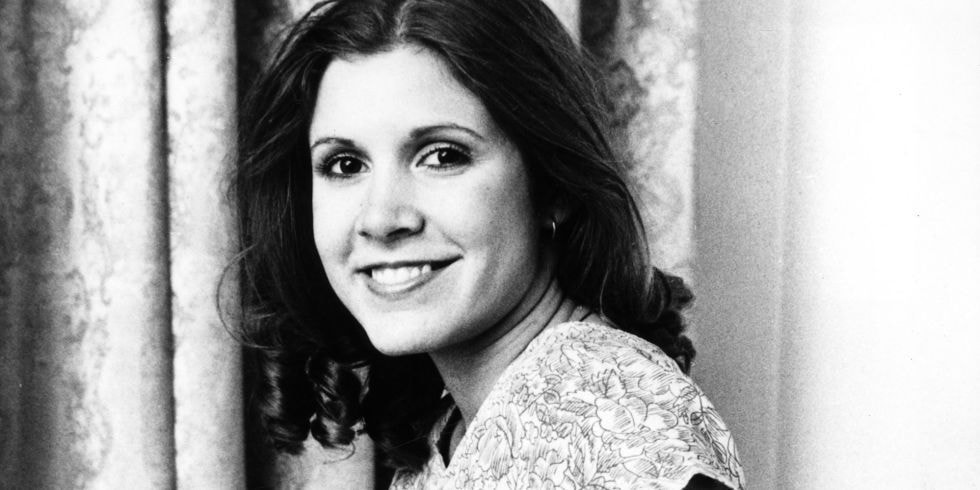
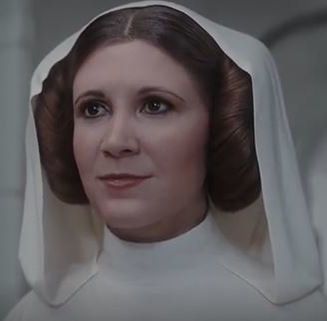
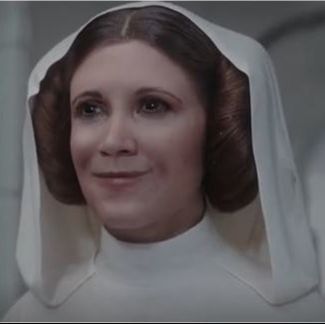
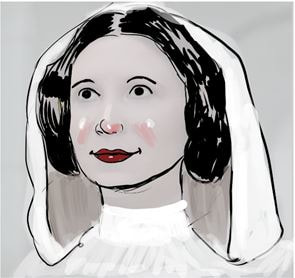
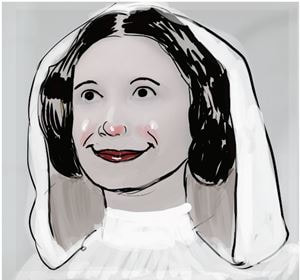
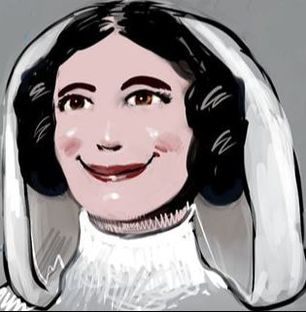
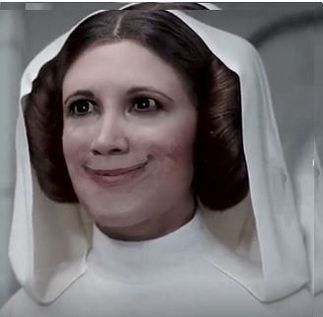
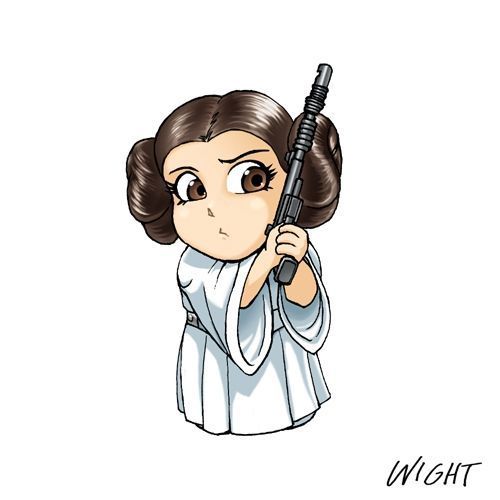

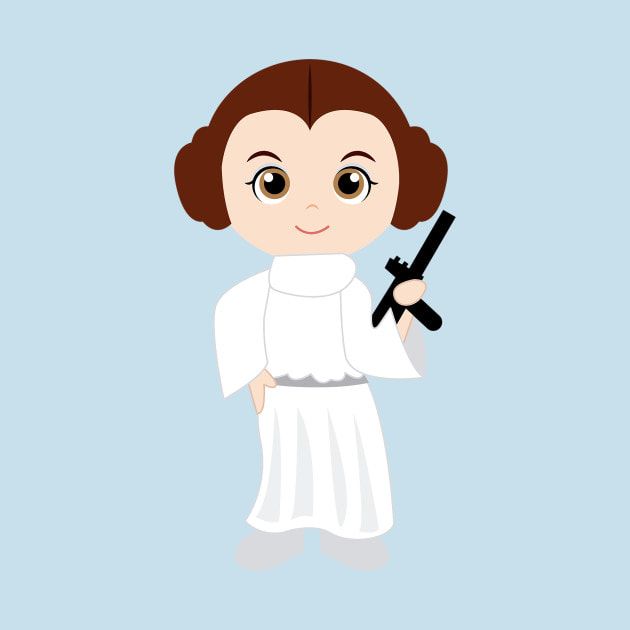
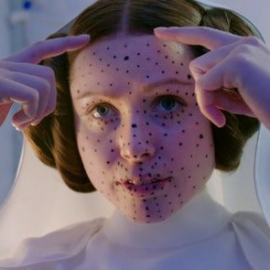
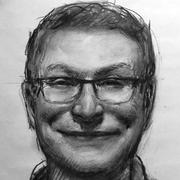
 RSS Feed
RSS Feed